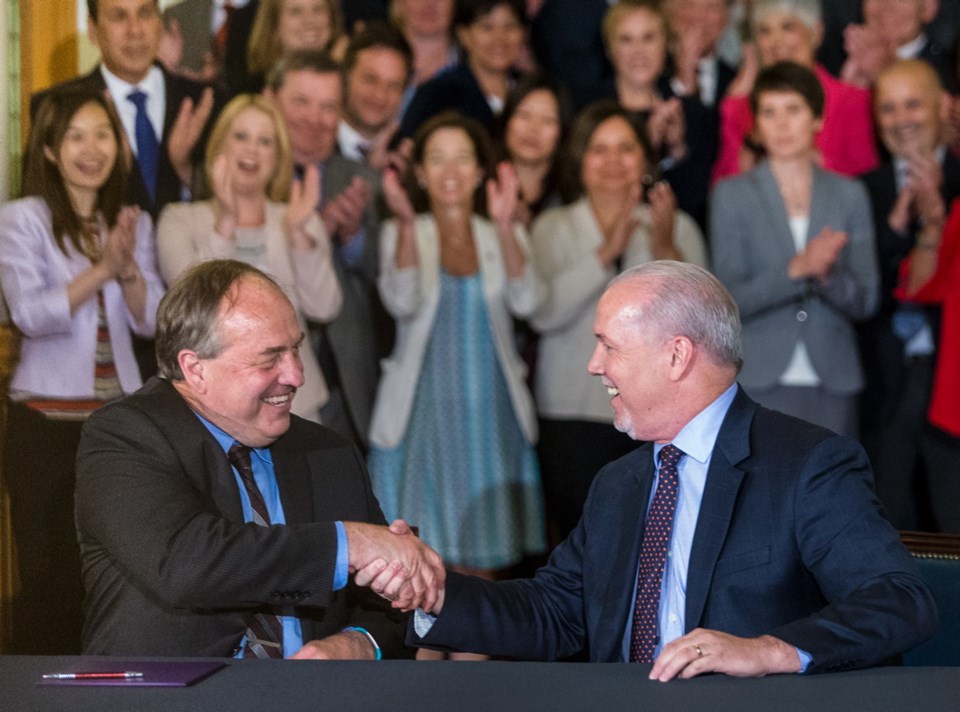Last month saw one of the most historic dramas in B.C. politics — the failure of the referendum on electoral reform by a vote of 61 per cent to 39.
I call it historic partly because the stakes were enormous — an attempt to install an electoral system entirely foreign to our province. But also because, had the referendum succeeded, it seems likely other provinces would have followed suit.
Previously, there had been five such efforts to introduce proportional representation — one in Ontario, and two each in P.E.I. and B.C. But none succeeded.
However, this latest effort was different. Not only were constitutional safeguards thrown to the wind, but troublesome details of the new system were withheld.
If this weren’t enough to crowbar a yes vote, it’s hard to see what would. For that reason, I think electoral reform is now a dead issue (though the premier of P.E.I. has promised to try again, presumably on the principle that you keep on voting till you get the right answer).
There are, however, two followup questions of interest. First, why did the referendum fail?
A polling company in Vancouver claimed it was because the questions posed were too complex. In an online poll conducted by the firm, a majority supposedly would have voted yes if the questions had been simpler.
Unfortunately, the company’s objectivity suffered when it came up with a “clearer” question of its own that virtually begged for a yes vote.
A more likely explanation is that voters feared the endless coalition governments that proportional representation brings.
The second, and more important question, though, is what happens to the Green Party now. They were by far the biggest losers when the referendum went down to defeat. Had proportional representation been in place during the 2017 provincial election, the Greens would have taken 17 seats, instead of the measly three they gained. Now, it’s hard to see where their growth options lie.
Keep in mind the party has been around, both federally and in B.C., for 35 years. Its main contribution to date has been splitting the left-wing vote and electing conservative governments.
You might think the obvious answer would be to merge with the NDP and form a New Democratic Green party. Running separately, the NDP/Green share of the ballot in 2017 was 57 per cent. Hang onto those numbers in a merger, and you guarantee success.
Yet it might not be that simple. For instance, on a riding-by-riding basis, who gets to represent the new party at the next election, the prior NDP candidate or the Green candidate? There are 87 electoral districts in B.C. Either way, you’re going to have 40-some very unhappy campers left out in the cold.
Worse still, what if the displaced candidates include sitting members. Mathematically, that would almost certainly have to happen. If you allow only Greenies to run in seats the NDP didn’t win last time — i.e. solid B.C. Liberal country — few, if any, are likely to be elected. Good luck trying to sell that, but equally, good luck trying to evict a sitting MLA.
True, the Wild Rose party in Alberta pulled off a merger with the Conservatives after dividing the right and handing the NDP its first win.
However, the circumstances were different. There, you had a coming together of equals. Both parties had essentially the same popular standing.
At the 2017 election in B.C., the NDP gained almost three times as many votes as the Greens, and more than 10 times as many seats. A coming together of equals this is not.
And here an essential fact emerges. A successful merger has to appear even-handed to supporters on both sides.
But my guess is that any power-sharing agreement the NDP could offer would be too one-sided for the Greens to accept. With all the goodwill in the world (and in politics, there isn’t any), it’s hard to see how John Horgan and Andrew Weaver can manoeuvre around such a basic sticking point.



